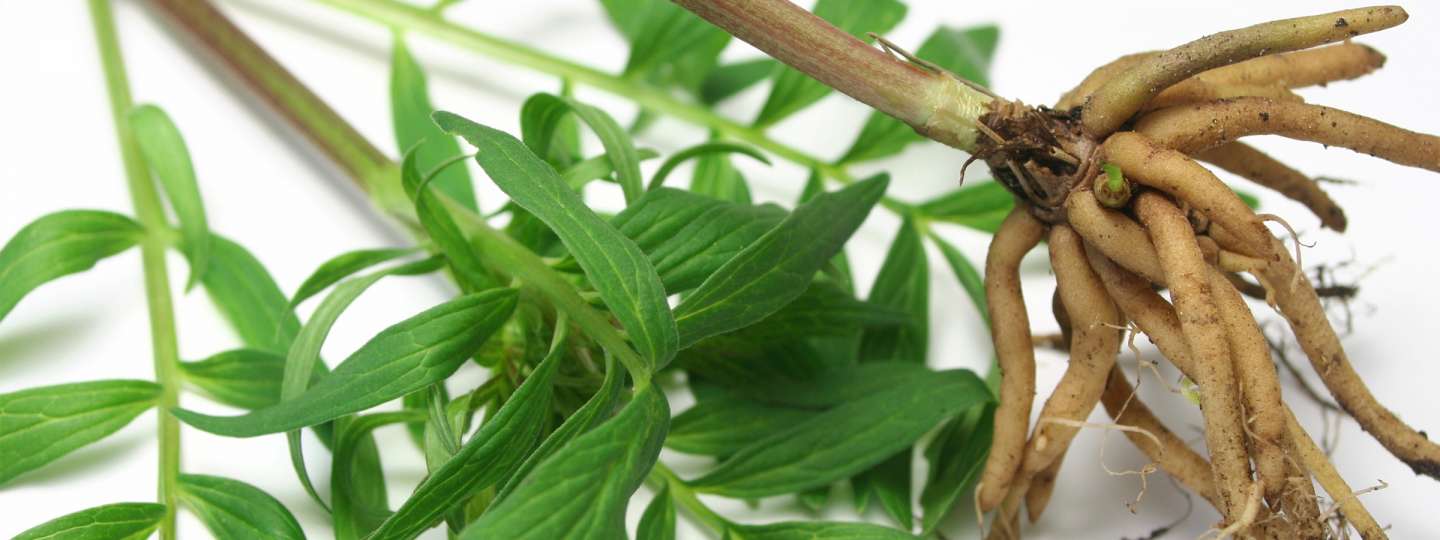Determining the Quality and Identity of Valerian Root Extracts
Valerian and marker compounds
Valerian (Valeriana officinalis) is a perennial herb native to Europe and certain areas of Asia with a long history of use in traditional herbal systems. Today it can be found as an herbal supplement in health food stores and herbal apothecaries, primarily for its purported calming attributes.
Like many herbal extracts, valerian root extract is often tested by analyzing for a “marker compound,” or a compound that’s unique to a specific herb and can be detected in a product sample to verify the identity (but not the potency) of an herbal product.
The distinction is that the actual active ingredient in an herb may not even be known,1 or there may be more than one active component, in which case detecting one or more marker compounds is the standard way to confirm the identity of the herb, without providing any scientific information as to its actual potency or efficacy.
Like other herbal remedies, valerian root has many chemical components, but it’s not abundantly clear which of these substances are most important to its efficacy. So we know that an assay for valerian marker compounds, which can be used for identity verification, is not a definitive test of actual potency or quality, as it does not quantify the admittedly unknown active constituents.
Testing and use of liquid extracts
Test results for liquid extracts may identify only about half of the marker compound levels found in dried extracts that are used for encapsulated products. This is because removing the liquid fraction (typically grain alcohol), which is usually about 50% of the volume of a liquid extract, is necessary to produce a dry herbal extract. The amount of alcohol in liquid extracts can vary, and sometimes the liquid extract is spray-dried onto a neutral carrier material such as starch, making comparisons with dried extracts less precise because of the natural variation in raw plant material, as well as variations in the use of these processing aids and carriers.
The use of liquid herbal extracts is also significantly different than using a similar dried extract in a capsule. The same principles that allow our brain to identify molecules from smells or tastes, that in turn guide the body’s responses, apply to molecules in liquid extracts that are both inhaled and tasted.
Consumers use liquid extracts because they understand that, by and large, they act faster and are generally considered more efficacious, primarily due to these substance signaling and being recognized by the brain via direct contact with sensors in the nose and mouth. This is the same principle as aromatherapy, and the body routinely sends taste and scent signals from foods to the brain in order to trigger digestion.2-9
These points show that laboratory testing to determine the relative efficacy of different forms of valerian root supplements to be scientifically flawed, though the identity of the herb can be confirmed through the observation of known marker compounds called valerenic acids.
NOW® liquid valerian testing
At NOW’s Quality Control lab, skilled analytical chemists tested samples of NOW’s Valerian Liquid Extract, also sending a sample of the same lot to an independent lab for confirmation of the results. The valerenic acids were confirmed to be within a range of 0.35 to 0.41 mg per milliliter (mL), with the independent lab reporting slightly higher amounts than NOW’s own lab. Since the serving size is 2 mL, the amount of valerenic acid marker compounds found in this product would be in the range of 0.70 mg to 0.82 mg, per serving.
By comparison, ConsumerLab reports that a dried root powder of valerian should provide about 0.17% valerenic acids, an amount equivalent to 0.68 mg in a 400 mg capsule, which would provide about the same amount of marker compounds found in one serving of NOW’s liquid extract.
This is not to suggest that the two forms are equivalent, as dried valerian root would contain fiber and other inactive material not present in a liquid extract, and the liquid extract contains roughly 50% alcohol, which is not present in the dried root. A liquid can also work on different metabolic pathways than a capsule, as discussed earlier. An alcohol extract can also concentrate active material that is oil soluble, such as certain alkaloids, which tend to be naturally produced and concentrated in some herbal roots.
While these assays cannot determine the actual potency of any valerian product, they do give strong evidence that NOW® Valerian Liquid Extract has been properly prepared from authentic, high-quality valerian roots, attesting to the overall quality of the finished product.
References:
1 Herbal Medicine: Expanded Commission E Monographs, American Botanical Council, Published by Integrative Medicine Communications.
2 Mori K, et al. Computation of molecular information in mammalian olfactory systems. Network. 1998 Nov; 9 (4): R79-102. Review. PMID: 10221572
3 Buck LB. Information coding in the vertebrate olfactory system. Annu Rev Neurosci. 1996; 19: 517-44. Review. PMID: 8833453
4 Mori K, et al. The olfactory bulb: coding and processing of odor molecule information. Science. 1999 Oct 22; 286 (5440): 711-5. Review. PMID: 10531048
5 Cerf-Ducastel B, et al. Interaction of gustatory and lingual somatosensory perceptions at the cortical level in the human: a functional magnetic resonance imaging study. Chem Senses. 2001 May; 26 (4): 371-83. PMID: 11369672
6 Touhara K. Odor discrimination by G protein-coupled olfactory receptors. Microsc Res Tech. 2002 Aug 1;58(3):135-41. Review. PMID: 12203691
7 Rolls ET. Information processing in the taste system of primates. J Exp Biol. 1989 Sep;146:141-64. Review. PMID: 2689559
8 Rolls ET. Tate, olfactory, and food texture processing in the brain, and the control of food intake. Physiol Behav. 2005 May 19;85(1):45-56. Review. PMID: 15924905
9 Breer H. Olfactory receptors: molecular basis for recognition and discrimination of odors. Anal Bioanal Chem. 2003 Oct;377(3):427-33. Epub 2003 Aug 1. Review. PMID: 12898108



